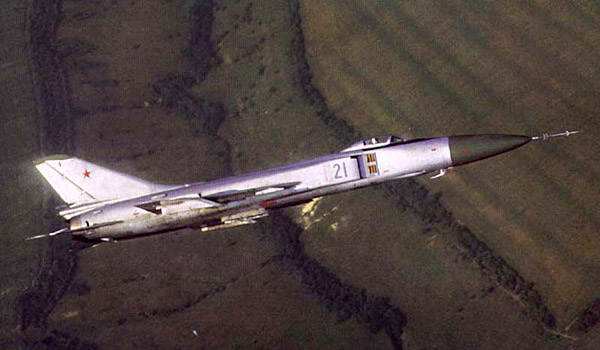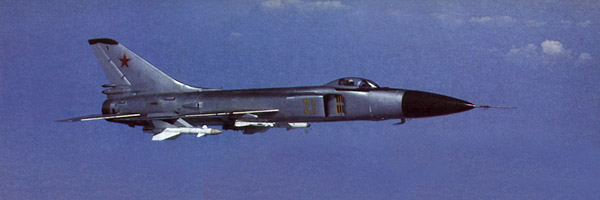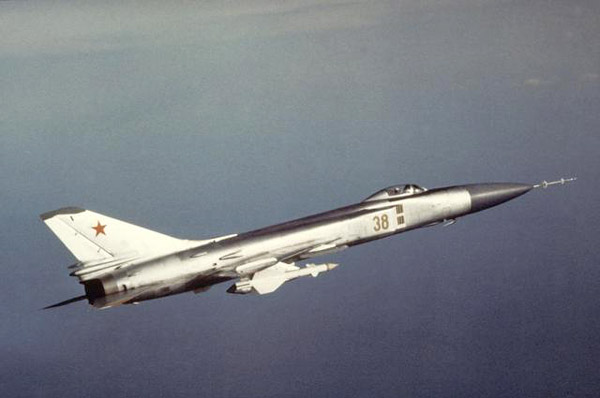 |
The Flagon was the first really capable all-wheater interceptor of the PVOS. The Su-15 remained a formidable aircraft with several upgrades, and was built in large numbers. Its speed is in excess of Mach 2.4 and carries large missiles on the outboard portion of the wings. The aircraft's wings are mid-mounted delta with square tips. There are two turbojets in the fuselage and two exhausts. The fuselage is rectangular from the air intakes to the tail. The nose is bullet-shaped nose and has a bubble canopy. The tail is swept-back and has a tapered fin with a square tip. The flats are swept-back, tapered, and mid-mounted on the fuselage. Large scale production of the aircraft was set up at the Novosibirsk city in the year 1967. OKB engineers continued to improve certain aerodynamical characteristics, radar, range and even new wing with larger ailerons was tested. All those improvements were recommended for all serial aircrafts so the final aircraft was completely different from the initial project. By the year 1972, over 400 fighters were assembled while a total production was about 1400 pieces. The Su-15 became infamous when one shot down a Korean Air Lines 747 on September 1, 1983. |
 
|